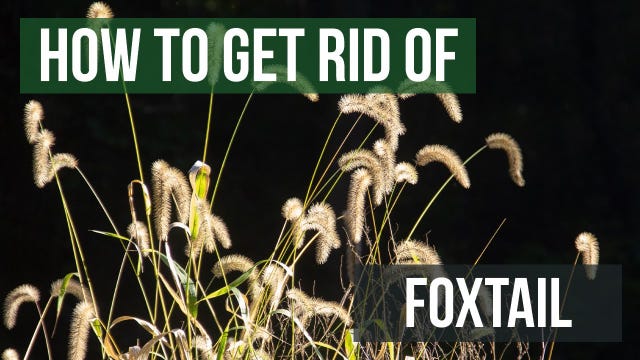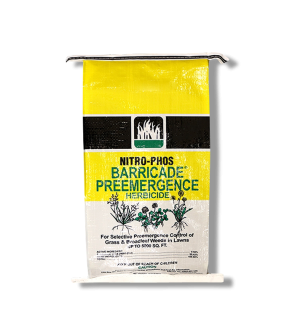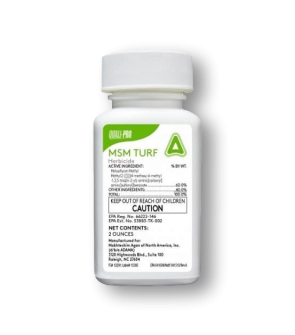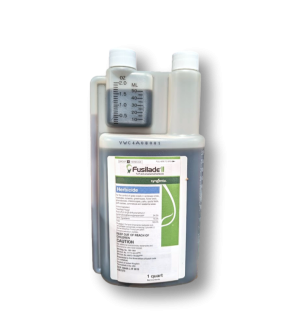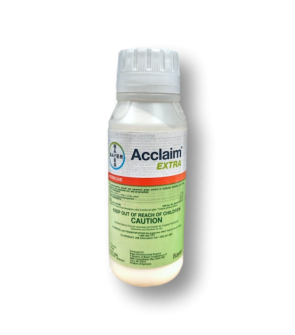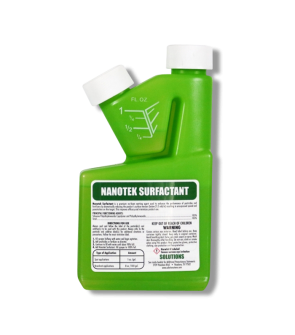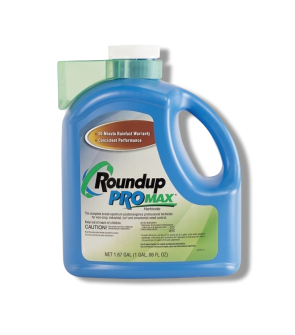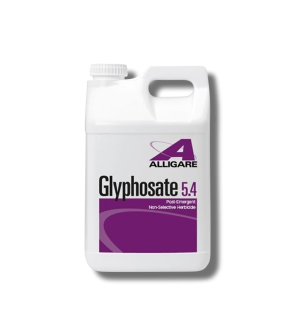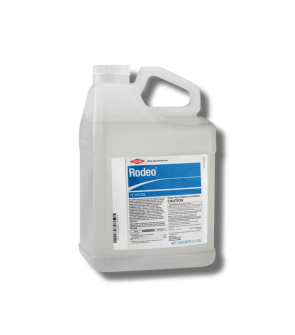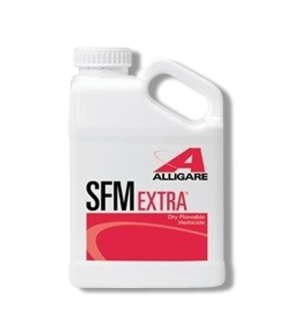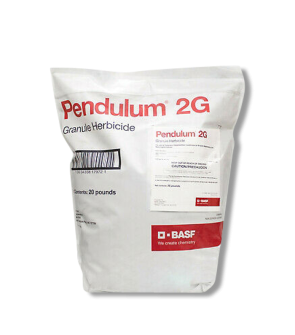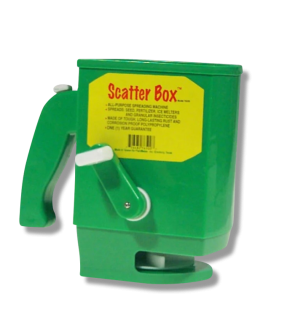Gain access to personalized product screening, the best pricing, rewards, and more!
Most Effective Products
Foxtail Control: How To Get Rid of Foxtail
Foxtail is a tricky and clever weed that tends to pop up whenever careful attention isn't paid to lawn maintenance. It is usually an annual but occasionally can be a perennial. Foxtail gets its name from its unique and bushy seedhead, which resembles, you guessed it, the tail of a fox. This weed has spread prolifically across America, invading disturbed soils.
Foxtails are found in ditches, cropland, disturbed building sites, roadsides, and anywhere the natural ground flora has been disturbed. They are a nuisance for lawn owners and can be hazardous to animals who come into contact with the plant, as the spikes and hairs can get lodged in nostrils and ear canals. This can greatly disturb an animal, which, in the worst cases, can cause death.
If you notice foxtails growing on your lawn, our DIY foxtail treatment guide will show you how to eliminate problematic foxtail weeds. By following our step-by-step instructions and using our professional herbicide recommendations, you can remove foxtail from your lawn quickly and affordably.
Identification

All successful weed treatment programs start with identification. It would be best if you were sure that the weed you are dealing with is, in fact, foxtail and not some other weed. Careless identification can lead to wrong treatment methods, costing you time and money. Knowing what foxtails look like can help. Here are some trails to keep in mind when checking to see if you have foxtails:
- Three species of foxtail most commonly invade lawns in the United States: yellow foxtail (Setaria pumila or Setaria glauca), green foxtail (Setaria viridis), and giant foxtail (Setaria faberi).
- These plants have many similar traits, and once they have matured, these grasses bear panicles or a unique brush-like seed head that looks like a fox's tail, hence their name. These seed heads grow from a stalk in the center of the plant, with several blades of grass sprouting from the same stalk down to the soil surface. Foxtail grasses usually grow in thick clusters, with green and yellow foxtails ranging from 1 to 3 feet tall, while giant foxtails can grow as large as 3 to 7 feet.
- Foxtail grass blades are flat and vary in width between 1/4 to 1/2 inches in green and yellow foxtails. The giant foxtail blades are 1/2 inch wide or wider.
- Yellow and giant foxtails have hairy blades on the upper surface, while green foxtail blades are smooth.
- When they have matured and developed seedheads, yellow foxtail seedheads can grow to 3 inches long and have short, coarse bristles. Green foxtails have softer bristled seedheads up to 6 inches long, while giant foxtails' seedheads are droopy and are between 3 to 7 inches long.
Use the descriptions and image above to help you identify foxtail. While it's important to know which species you're dealing with, they can be treated with similar products and strategies. If you have trouble identifying the weed, contact our experts via phone or email. We will respond quickly with not only the correct identification of the plant but also our top product recommendations for control.
Inspection

After you have confirmed that you are dealing with foxtails, you can proceed with an inspection. In this phase, you will pinpoint the areas where foxtails are growing most and observe the conditions that help them thrive.
Where to Inspect
Foxtail typically thrives in areas undergoing stress or in disturbed, compact soils that are rich in nitrogen, disturbed; meaning the soil has been disturbed by human activity. These can be in ditches, croplands, farmland, commercial building sites, roadsides, and cracks in paved areas where bare soil is exposed. While foxtails thrive in that soil, they can also grow in a wide variety of environments. They can even show up or spread to lawns. Foxtails are summer annual weeds. They'll germinate in spring when the soil temperature is over 68 degrees Fahrenheit.
Foxtail is less likely to grow in natural undisturbed areas. Yellow and green foxtails are distributed across the entire United States, while giant foxtail is mostly found in the country's southeast region.
What To Look For
A unique and bushy seedhead that resembles the tail of a fox. Once you have determined how severe of a foxtail problem you have (a minor flareup or majorly taking over your entire lawn), you will then know where to focus your chemical herbicide applications.
Treatment
Please be sure to properly protect your skin and eyes with safety equipment when handling any herbicide. Goggles, gloves, and long-sleeved clothing should be the minimum. Remember to keep all people and pets off the treated areas until dry.
If Foxtail has already emerged on your lawn, you'll have a tougher time controlling it. They don't respond very well to manual methods of control, so your best bet is to apply a post-emergent, such as MSM turf herbicide.
Step 1: Mix and Apply MSM Turf Herbicide
You can use a post-emergent herbicide like MSM Turf to get rid of foxtails growing in turf. MSM Turf Herbicide is our go-to product for removing foxtails because of its convenience and cost. MSM Turf is a dry flowable herbicide that contains the active ingredient Metsulfuron Methyl and can cover 43,560 sq. ft. of area (1 acre).
This product is labeled to treat a wide variety of broadleaf weeds, but it can also be used to control a few grassy weeds, including foxtail. MSM Turf can be applied over warm-season grasses and a few cool-season grasses. You will apply this product at 0.5 to 1.0 ounces per acre of treatment area. In smaller applications, this translates to 0.011 to 0.023 ounces for 1,000 square feet or 0.31 to 0.65 grams in metric.
If you're dealing with foxtails growing from cracks and crevices in the pavement, you can use a product like Eraser. Eraser is a non-selective weed killer that's made with the active ingredient glyphosate. Glyphosate is a very powerful ingredient, however, it is non-selective, meaning the product will affect and kill any plant it is applied to. This makes it great for treating isolated spots like within pavement, but it's generally not recommended for lawns as it will severely damage or kill your grass if you're not careful. Use Eraser at a rate of 2.5 fluid ounces per gallon of water. This will treat up to 300 square feet of treatment area.
To mix your product, add half the water into the pump sprayer, measure the amount of MSM Turf or Eraser, then the remaining half, and close the sprayer. Shake the sprayer to agitate and pump to produce a low-pressure spray.
If you're mixing both products in separate sprayers, keep the Eraser solution labeled as a non-selective herbicide.
With low pressure, spray weeds directly and use a fan setting to thoroughly coat the leaves' surface. Spray the weed to the point of wetness, but do not runoff.
Adding a surfactant to the MSM Turf Herbicide mixture, such as Nanotek Surfactant, can enhance the effectiveness of removing foxtails within your property by mixing it with the MSM turf herbicide.
Measure the square footage of your yard and input the appropriate amount of MSM turf herbicide in a pump sprayer or hose-end sprayer, mixing with the appropriate amount of water. Add surfactant to the MSM turf herbicide mixture at a rate of 0.5 to 4 tsp. per gallon of the solution and agitate until well mixed.
Apply the MSM Turf Herbicide solution to the foxtail plants using a fan-tip nozzle spray setting. This will shoot a mist that will evenly coat the foxtail for the best results in eradicating it from your lawn.
We recommend follow-up applications after a couple of weeks. Don't assume a "one and done" application will be enough. Foxtail is persistent, so you must be just as persistent to eliminate it by conducting multiple applications as necessary until it is gone.
To completely eradicate the foxtail, you will probably need to apply MSM Turf Herbicide at least two to three times. Within the first two weeks of application, you should see affected plants wilt and start to die.
Prevention
The best way to deal with foxtail weed in your lawn is to prevent it from growing with the following preventative measures:
- In the early spring, before the soil temperature warms to 65 degrees and before foxtail seeds germinate, apply a pre-emergent, such as a Barricade. When applied properly, Barricade will form a chemical barrier that will stop weed seeds from sprouting. Barricade comes in a granular form, so you'll need a broadcast push spreader to apply it. Be sure to look up your area's soil temperatures to find the best window for pre-emergent application. Timing is key for the best results. Depending on your turfgrass type, barricade can be applied from 1.5 pounds to 4 pounds per 1,000 sq. ft. (read the label to find the proper rate for your turf type). Once you have measured the appropriate amount based on your calculations, load the barricade granules into a hand or push spreader at the right calibration setting. Then, apply the granules until your lawn is covered evenly to get a uniform application. A push spreader is preferred if you have a large property to spread the granules on, while a hand spreader, like the plantmates scatterox, is better for more precision and control over where you want to spread the granules. Broadcast half your granules in parallel lines once across the area. Then, broadcast the other half at a perpendicular angle to cover the entire area. After broadcasting the granules, you should water them and activate them with at least 0.5 inches of water. Most effective control can be achieved with at least half an inch of water within 14 days of application. If applied properly, Barricade will stop new weeds from germinating in your turf for up to 90 days. Foxtail seeds are known to remain viable for up to three years, so be sure to reapply Barricade in the fall to stop winter weeds and again in spring to stop that year's round of foxtails.
- You can also prevent the return of foxtail after it has been controlled with cultural practices that will hinder the redevelopment of this invasive grassy weed. A lush and healthy lawn is your best defense. By strengthening your turfgrass and keeping up with maintenance, you'll choke out weeds and give them little opportunity to grow.
- Keep in mind that foxtail grows in soil with high Nitrogen content. Properly fertilize your landscape at the best time recommended for your particular grass. When selecting a fertilizer, choose the right mix of Nitrogen, Phosphorus, and Potassium that will keep your lawn strong but not overstimulated. You can even consider using a slow-release fertilizer to temper the amount of nitrogen your lawn receives.
- Mow your lawn taller to about 3 or 4 inches, and water your grass deeply once a week rather than a little daily. These can help strengthen your lawn and fight weeds that are attempting to grow.
Key Takeaways
What is Foxtail?
- Foxtail is a grassy weed that often pops up on residential lawns that are not receiving enough lawn maintenance.
How To Get Rid Of Foxtail
- Use post-emergent control via MSM Turf Herbicide to keep foxtail under control when the plant has emerged.
Preventing Foxtail Reemergence
- Prevent the return of foxtail with a pre-emergent barricade application by implementing a good lawn maintenance routine that ensures a thick, healthy, nutrient-rich lawn.
-
Q:How long should I wait to water my grass after using MSM Turf Herbicide?5/3/25
-
Q:Would like to know what product is best to control foxtail in pasture grass?6/6/24A:We would recommend using Alligare MSM 60 Herbicide. https://www.solutionsstores.com/alligare-msm-60-herbicide - This is labelled to control foxtail in a range of application sites, including pastures!
Colin
6/7/24 -
Q:Hello! Your information has helped me a lot! I am going to order the barricade but I do have a question, I am trying very hard to kill Foxtail on my property with MSM turf right now, and then after it appears to be dead, I was going to burn off Whatever residual is left of the plant and then plant new grass for a lawn. How long should I wait prior to seeding the new grass after MSM turf? And then do I need to put down barricade to try to prevent new seeds from germinating or do I wait till fall to do that? Thank you so much for your help!6/1/24A:Generally, you will want to wait about 8 weeks after applying MSM Turf to put down seed. For Barricade, you may want to wait until fall to apply because Barricade can inhibit the germination of turf seed.
Colin Travis
6/7/24






